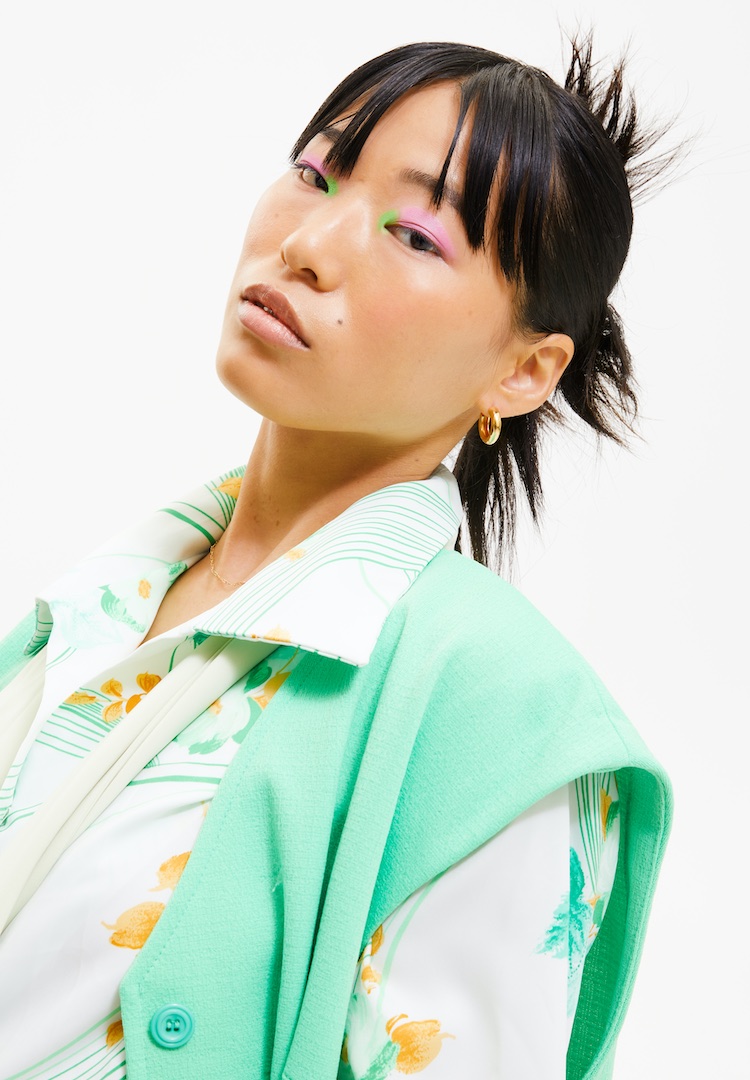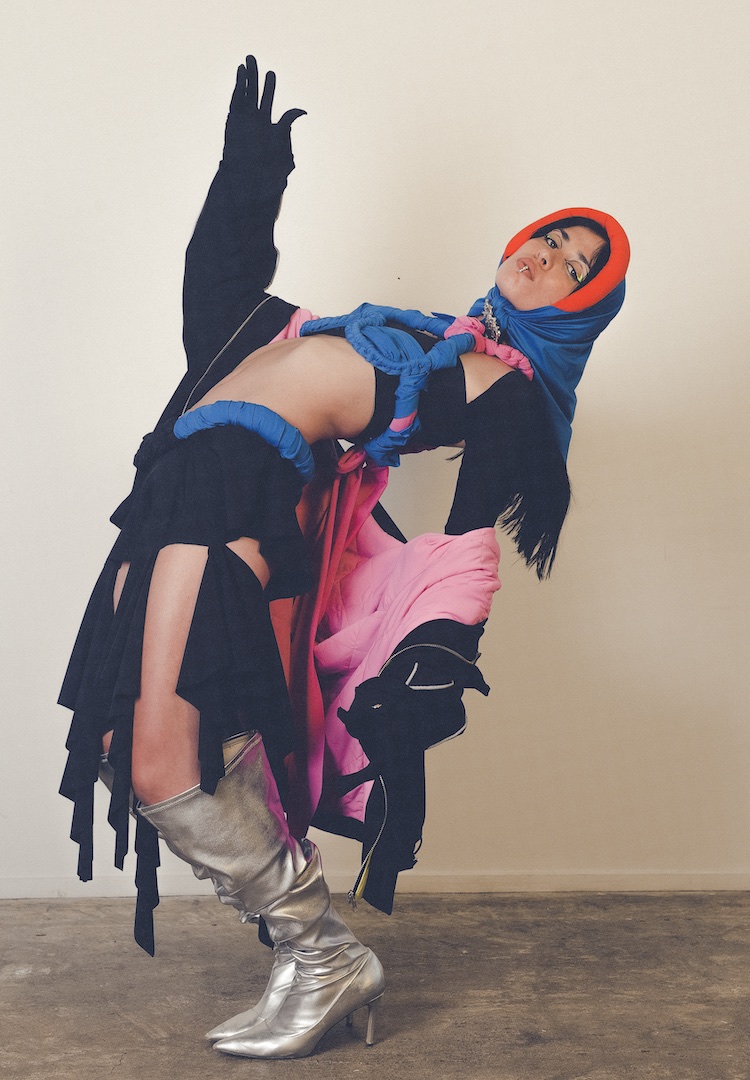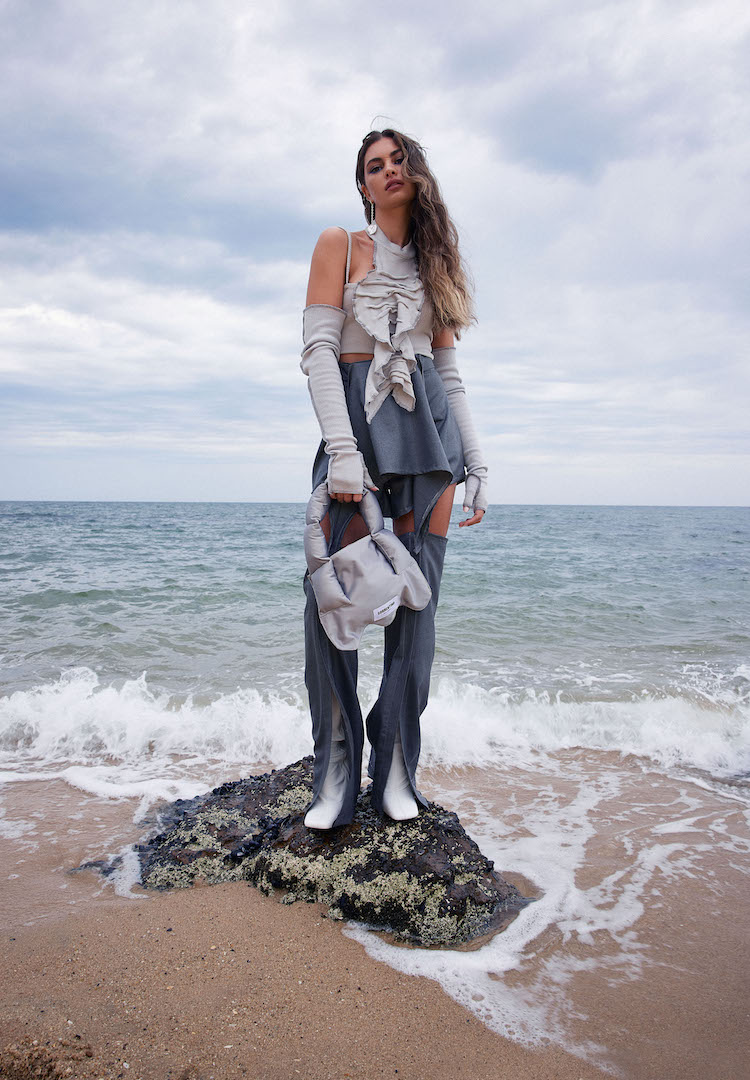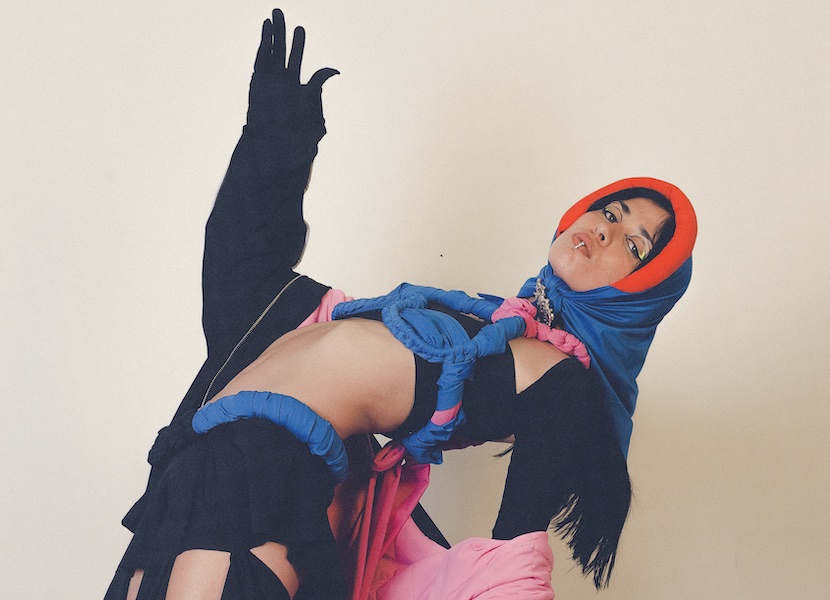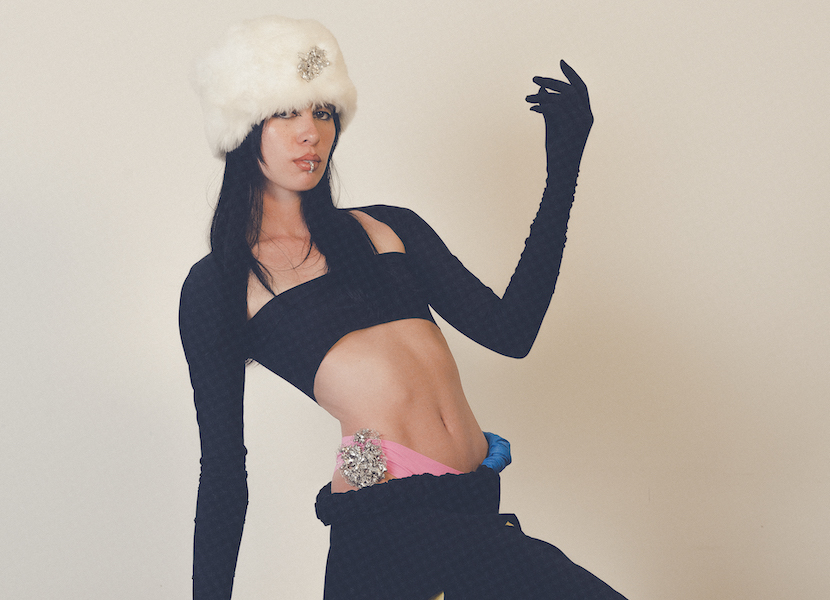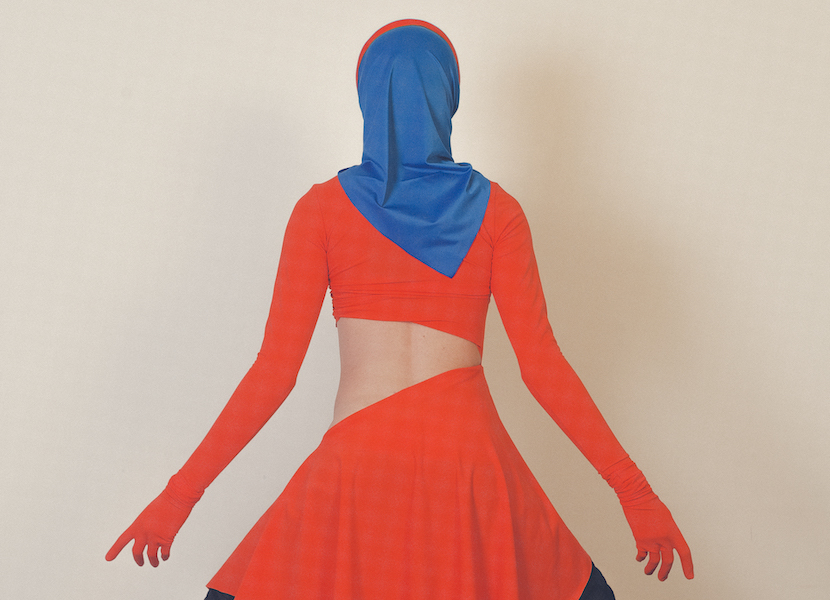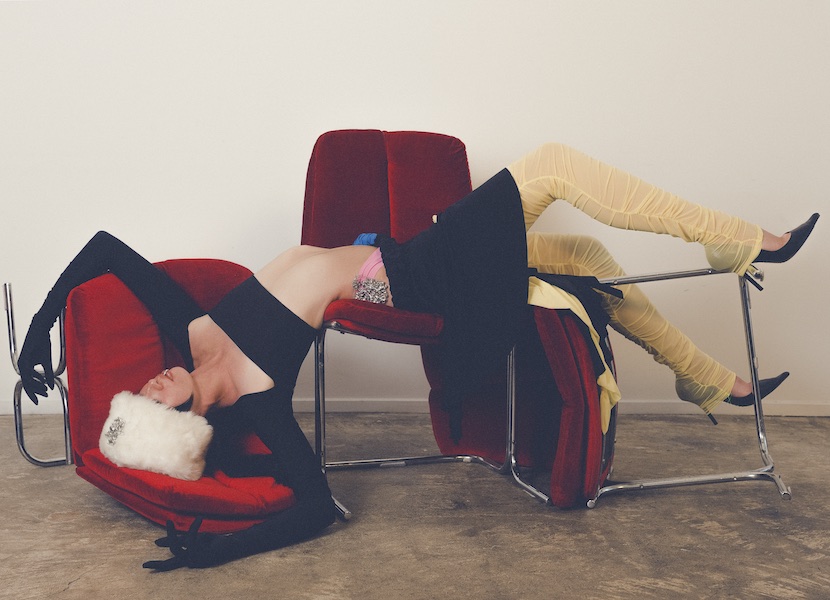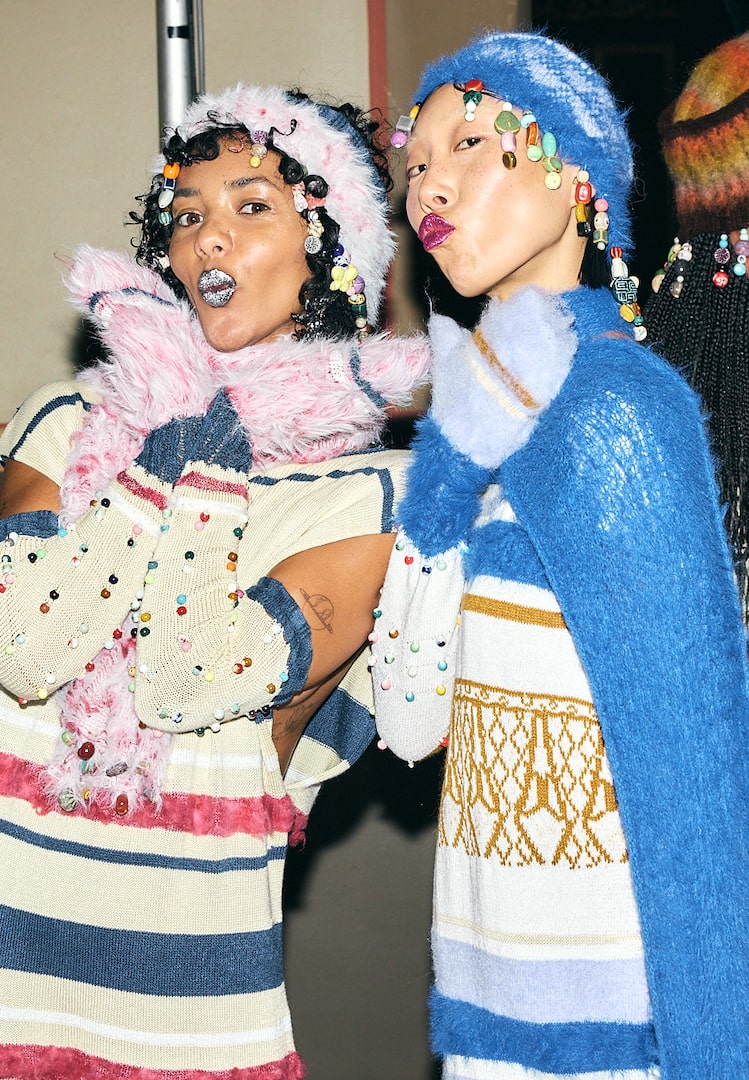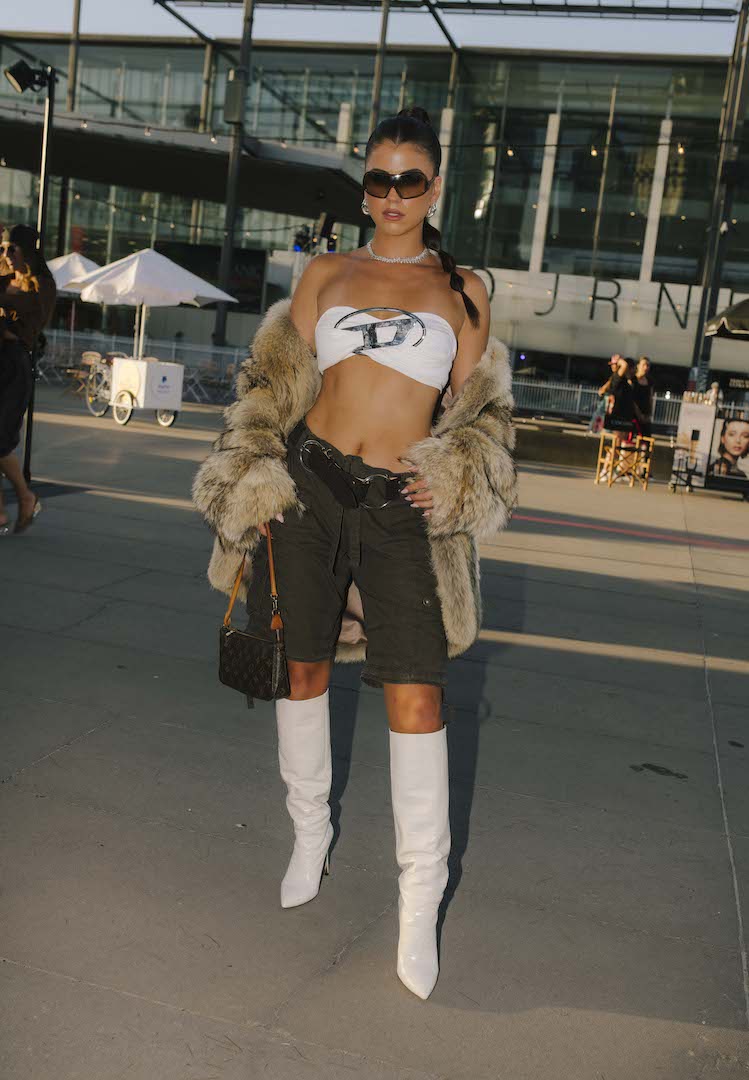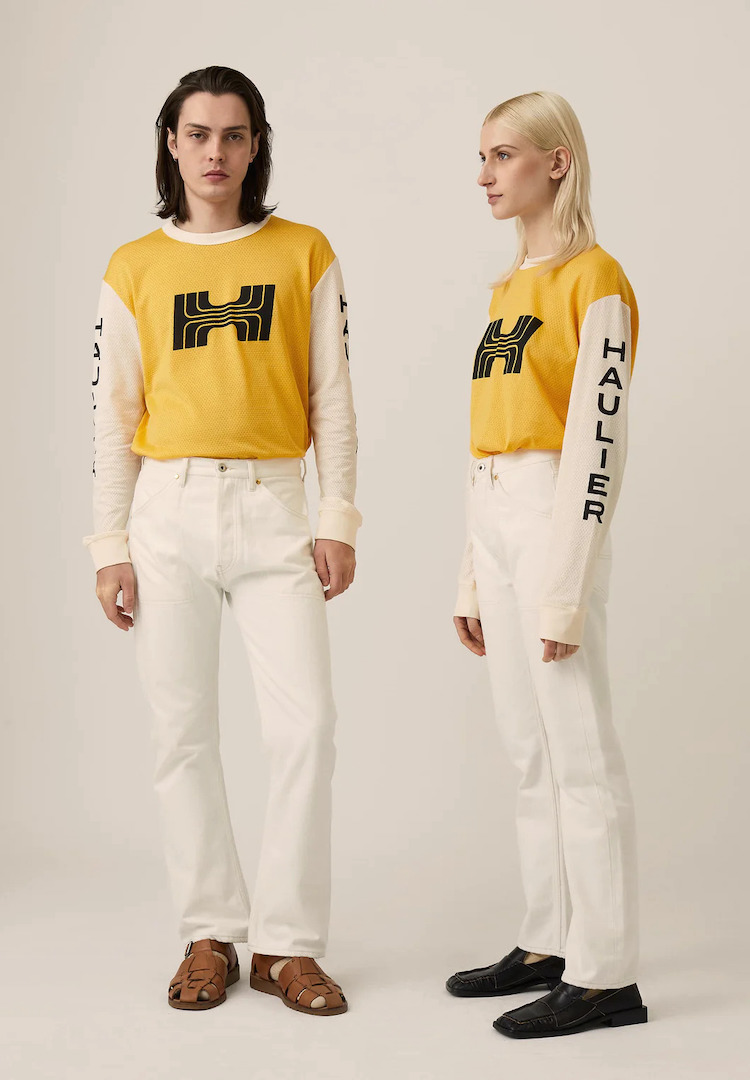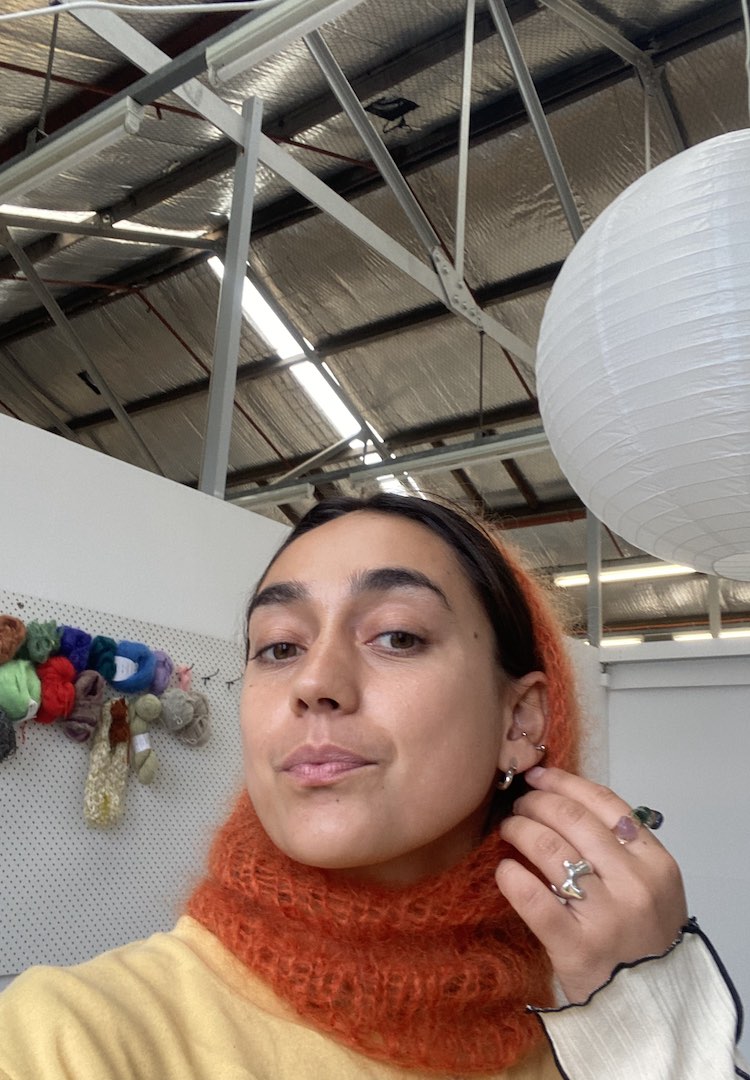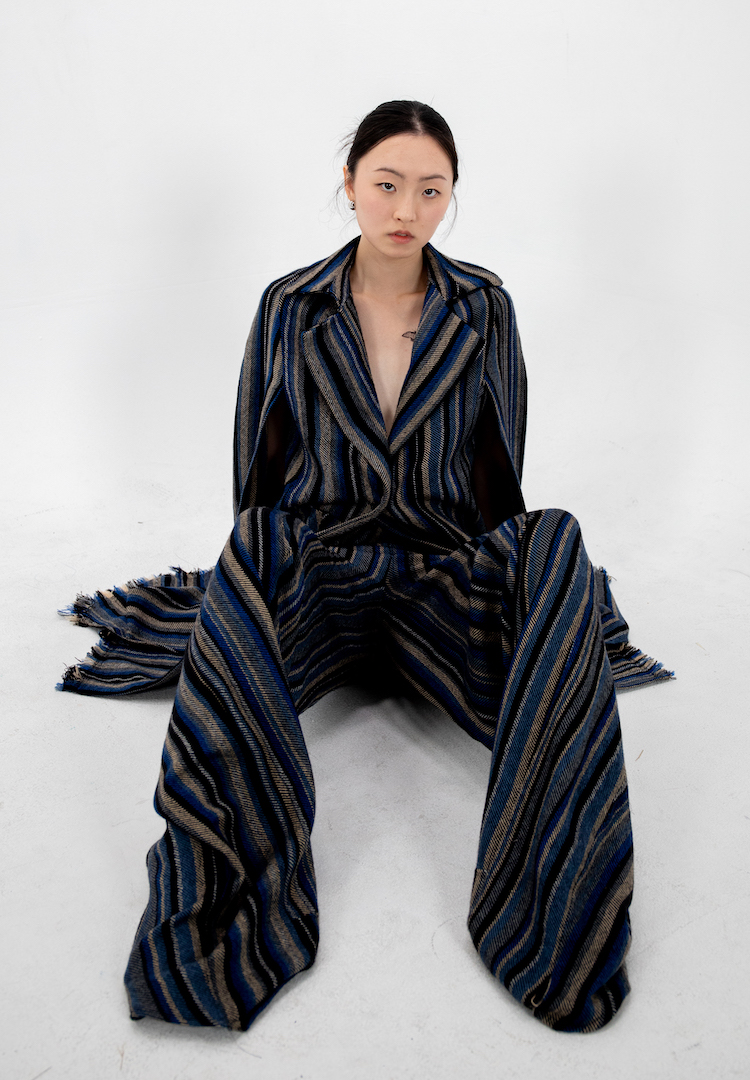Melbourne graduate Carolina Hegeman is designing clothes that celebrate fluidity
Photography by Myles Pedlar
Words by Gabrielle O’Hagan
A collection in motion.
If you’ve ever read Robert Frost’s poem The Road Not Taken – where a man is presented with two possible paths and chooses the one less travelled by – then Carolina Hegeman’s graduate collection is an apt representation of the tale.
The young designer and RMIT graduate has a knack for breaking from convention and is motivated by the idea of stepping outside her comfort zone. Her graduate collection, Eros, is no exception. Think contrasting colours, fabrics and textures, blended seamlessly together to create unique, thought-provoking designs.
For more fashion-related content, visit our Fashion section.
Eros is all about taking risks and breaking rules. Determined to deconstruct and reimagine traditional techniques, Carolina used draping fabrics, soft textures, wet-look finishes and metal embellishments to encapsulate the way that metal moves when it’s melted down. This movement represents and celebrates the inherent fluidity of gender, sexuality and the self. The collection earned her a spot among the top 10 designers at the 2022 National Graduate Showcase at PayPal Melbourne Fashion Festival.
We are excited to once again be supporting The National Graduate Showcase presented by Samsung Galaxy to celebrate Australia’s top-ranked emerging talent in fashion. A select number of leading fashion graduates from all over the country will exhibit their visionary collections in a digital presentation, showcasing cutting-edge design and innovation.
Over the past few weeks, we’ve been profiling each designer across a series of interviews. Our final interview is with Carolina.
Please introduce yourself to our readers.
My name is Carolina, I’m an ambitious ‘Eurasian’ with a passion for fashion, darling. I graduated last year with honours in fashion design at RMIT and now I’m trying to figure out where I go from here.
Tell us about your collection.
My practice is an exploration of movement through tangible textures, stretch and weight. The hyper-feminine silhouettes are a combination of strips, knots and drape on the bias. The collection is an extension of fluidity, further emphasised through the contrasting integration of metal embellishments.
What were the major points of inspiration for your graduate collection, and you more broadly as a designer?
View this post on Instagram
The key points of inspiration within my collection are the body, a fixation of the ‘feminine’ silhouette which is identified through the exposure of skin and hyper-feminine cuts. I also explored fluidity through draping on the body, and texture to encompass the notion of fluid movement or wet-appearing texture.
Contrast – the use of bold and vivid colours, textures [and] materials, all of which contrast yet complement each other. I find this interesting and somewhat of a personal challenge. Naturally, I gravitate towards black (maybe it’s a Melbourne thing?), so in my collection the bold colour choices are purposeful. The yellow, red, blue, pink and black against [the] textural contrast [of] fur, mesh and metal.
Tell us about the experience of putting together your graduate collection.
View this post on Instagram
It’s a journey – plenty of trials, errors and sleep deprivation. Working on this collection helped me expand as a designer and it was an opportunity to grow and create something that was out of my comfort zone such as the challenge of habitual tendencies and preferences. So essentially working with lots of colour and materials I’ve never worked with before… working with metal/silver was also an interesting component to my collection [that] definitely challenged my patience.
At first, your practice centred on the ‘granny square’. Why this element?
Initially, I was looking into the reconstruction and deconstruction of the handmade granny square, coinciding with professional practitioners like that of Miuccia Prada, whose collections I think nicely demonstrate the traditional conventions of the timely crochet craft. By testing and sampling unconventional materials to crochet, I was able to create a source of samples that I found best expanded the conventions of the ‘tradition’.
Specifically, it was the wire bikini that defined and expanded my practice; at this point, I wanted to continue developing the method and technique of crochet in conjunction with the concept of fluidity via melted metal… I liked the irony of [this] because metal has quite a harsh, cold and industrial connotation or association, [and] I suppose that in itself is a challenge and contrast of elements – making something strong and stagnant appear fluid and in-motion. As a prototype I began with the wired crochet square dipped into hot wax and layered with chrome paint to replicate the fluidity and movement of dripping metal.
As a permanent structure of this metal prototype, I developed the piece into a solid, weighted metal by soldering onto the wire and casting it into silver. Although the granny square/crochet element is not clearly defined within my collection now, I acknowledge its role as a platform to expand on this traditional technique. It was the foundation of my practice which ultimately grew into something unconventional.
Your work also explores movement across different materials. Can you tell us a little more about that?
View this post on Instagram
The garment silhouette is a combination of strips, knots and drape cut on the bias, further expanding the stretch and fluidity of the material along with the weighted metals, the drape method and feminine silhouettes. These elements are a nod to the designer Halston and his work from the early ’70s, a practitioner whose work I… resonate[d] with [due to the] methods of draping, movement, and colour.
Fluidity is paramount in the process. Not only is it identified through the metal, wet-look and draping, but also in regards to the narrative. The fluid nature of the work and my methods I believe… portray someone’s ‘otherness’ which might imply their sexuality not being confined by social structures… it’s an awareness of the body and its relationship to construction of… fabrics and their textural movement against the harsh elements like… the metal, leather and dark layered pieces.
What part does sustainability play in your design practice? What about other ethical considerations?
As a designer, I considered material wastage, upcycling old and found materials, and also considering timelessness within the designs – coming up with something that is not necessarily ‘trendy’ or in the moment but designs to withstand time.
What about the Australian fashion industry needs to change?
I think there needs to be more of an emphasis on young and upcoming designers and what they can and are currently offering. The spotlight needs to shift. There needs to be funding and greater coverage on those finding their feet. I understand that industry respect and recognition needs to be earned, but rather than scrambling for a place, there needs to be more room.
As [a] recent graduate, I know that there are so many incredible young designers with potential but it’s the same old story in Australia’s creative industries where there are limited opportunities and recognition. The industry and myself included are all guilty of believing that it’s just character-building.
Some of Carolina’s responses have been edited for clarity.
To follow Melbourne Fashion Festival more closely, head here.

